silver maple (Acer saccharinum)
Sapindaceae, the soapberry family*
(*Aceraceae in older manuals)
How to recognize silver maple. Maples have leaves that are opposite in arrangement, usually simple in complexity, with lobed margins. The paired winged one-seeded fruits (samaras) are distinctive maple traits. Maples fall into two categories based on the hardness of their wood. The so-called “soft maples,” of which silver maple and red maple are examples, have serrate (toothed) lobe margins. Silver maple, Acer saccharinum, with its serrate leaf margins is a soft maple.
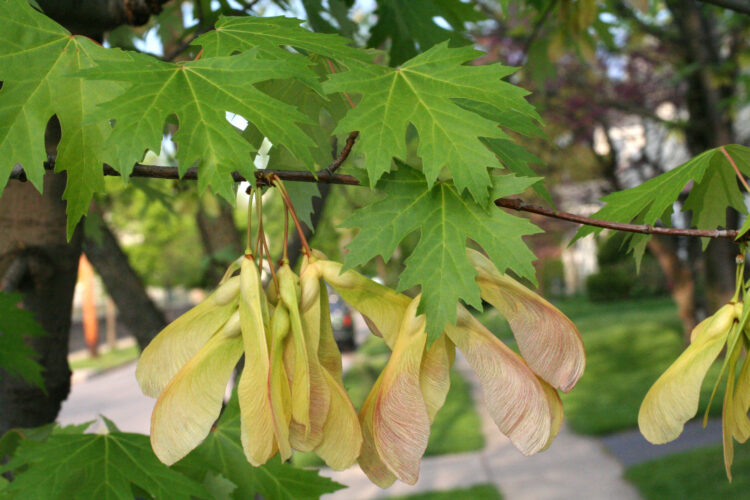
Silver maple has serrate, deeply lobed leaves.
Photographed May 1, 2006 on a Columbus city street.
Flowers and fruits. Silver maple flowers, being wind-pollinated, are individually small, and lack petals. They can nonetheless be conspicuous during their late March to early April blooming period, because they are borne in plump and dense red clusters at the tips of many or most branches. At this time many people report that their silver maples as being “in bud” when they are actually fully flowering.
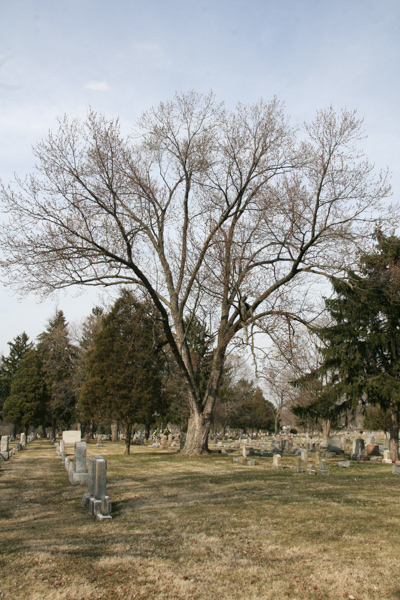
A silver maple tree in full bloom.
March 21, 2007, that cemetery on Olentangy River Road the name of which I forgot.
The flowers are unisexual–either staminate (male) or pistillate (female)–as are the trees themselves. i.e. the species is dioecious. Below see the two types of flowers–male on the left; female on right.

Silver maple flowers. Left: staminate (male); right: pistillate (female)
March 17, 2010 in Marion County.
Silver maple is one of those messy trees that a lot of stuff falls of that aren’t just leaves. Here are shed staminate flowers on a city street in the 3rd week of April, 2009.
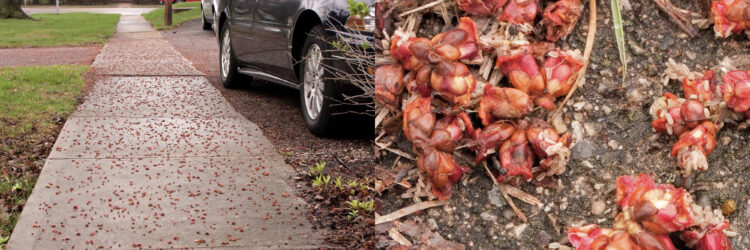
What a dirty tree! A city sidewalk littered with silver maple flower. Left: panorama; right: closeup of the littery litter.
Silver maple samaras are produced in the spring, about when the leaves are emerging. They are distinctive: large, sickle-shaped, and spreading apart at an acute angle, formikng a “V” shape.
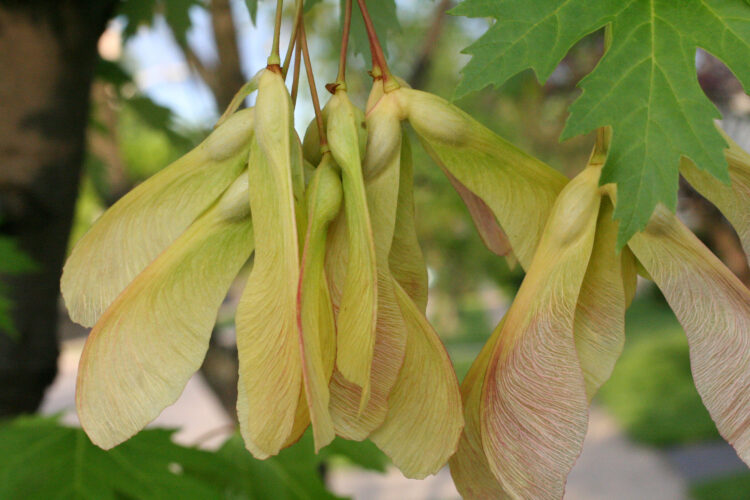
Silver maple fruits appear in spring.
May 1, 2006, Columbus.
It’s not just the flowers that are the great American messathon. Check out these fruits all over the ground! This was on May 10, 2008.
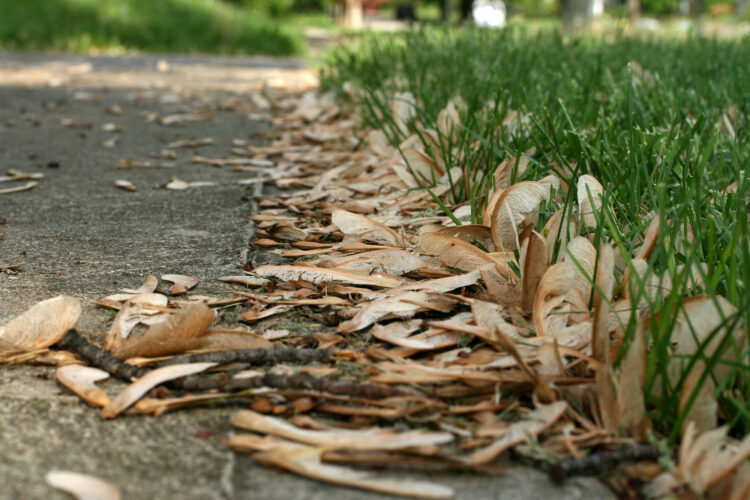
Bark. The bark of older trees is grayish and shreds of in flakes, leaving brown spots.
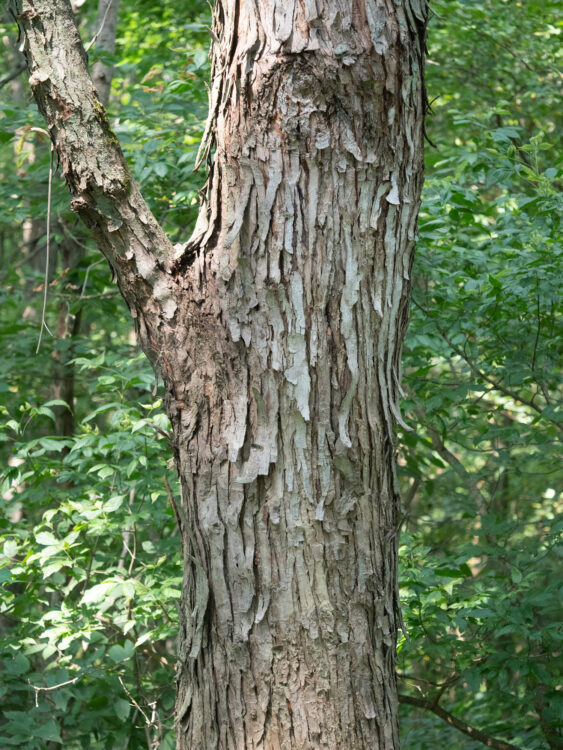
A silver maple tree at Slate Run Metro Park in Pickaway County.
These trees can be huuuuge. Here’s one with the kid, when she was a kid.

A multi-stemmed silver maple at Whetstone PArk.
In the winter. Silver maple buds are round, scaly, and clustered. As mentioned by Braun (see below) the twigs have distinctive upward curve.
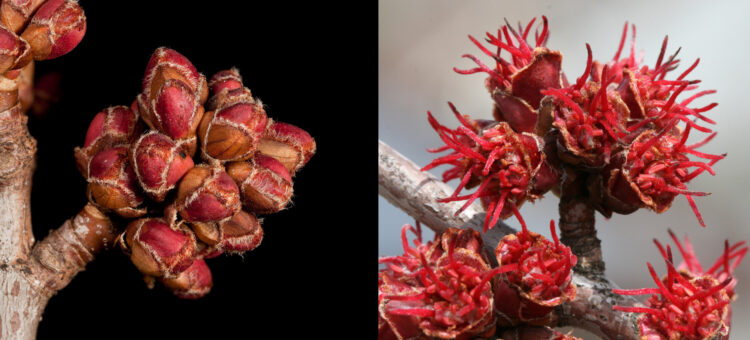
Where to find silver maple. E. Lucy Braun, in The Woody Plants of Ohio (1961, 1989; The Ohio State University Press) tell us that this species is “A large tree of stream banks and alluvial forests, usually subjected to flooding; fast-growing, and commonly planted as a street tree. The largest Ohio tree of this species, 24 ft. 2 in. in circumference 41/2 feet above the ground, was found by Karl Maslowki near Utopia, Clermont Co., close to the Ohio River. More yellow in flower than red maple, and wutrhg large green samaras becomming straw-colored; leaves turning dull yellow in aautumn, rarely with some red coloratrion. In winter condition, the upward curve of the twigs is distinctive. This species ands red maple are sometimes cslled soft maple.”
Scanned Image from an Old Book
(Flora of West Virginia, by P.D. Strausbaugh and Earl L. Core)
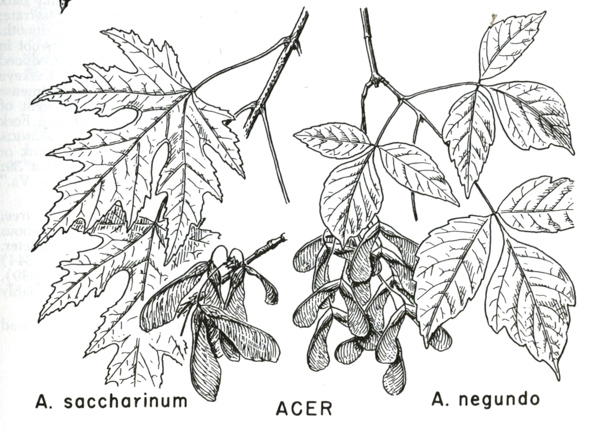
Oooh, ooh! I have a question!
What are the three main plant mating systems? Flowers that each contain both functional stamens and pistils are “perfect” flowers. Plants like silver maple that produce unisexual (either male or female) flowers can either be monoecious (having both sexes on the same plant, like most sugar maples) or dioecious (with separate male and female plants/individuals, like some silver maples).
